A Japanese technique
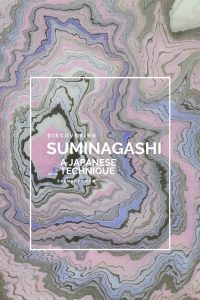
In 2011, i was researching about marbling techniques to decorate paper when i found a beautiful image of suminagashi. I was very impressed by the delicacy of the lines, clear and ethereal, very different from the marbling I knew.
Suminagashi means “floating ink” and is an ancient method of marbling paper developed in Japan.
I started looking for more about this technique and it was not easy! I found a small book and the contact of Mr. Kuroda in Japan (one of the experts on the subject), who kindly shared his knowledge with me for about a year.
I began to experiment a lot taking notes, trying papers, inks and brushes. This craft amazed me not only for its result in the paper but also for its magical, simple and meditative process. I felt like capturing the air or the soft movement of the water in a thin piece of paper.
Last year I had the great opportunity to visit in Japan, the place where this technique was born around 1000 years ago. I spent a day visiting Echizen, a small and remote village that has manufactured washi paper for centuries. It is a splendid and interesting place, where the techniques are passed from generation to generation within the same family. It was fascinating for me to see the dedication, patience and skills used for achieving high quality papers made entirely by hand.
In this beautiful and peaceful place lives mr. Tadao Fukuda, an artisan dedicated to suminagashi, who opens the doors of his studio for those who want to know the technique and see how he works. So I spent some time with him and prepared a suminagashi sheet under his advice. A delight!
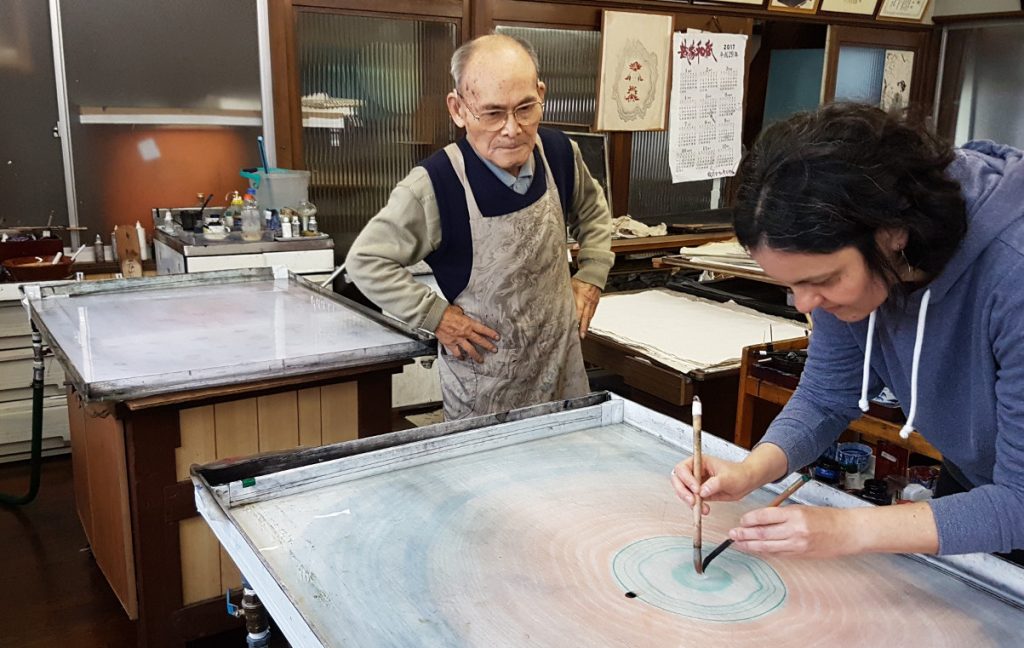
Mr. Fukuda is 93 years old and he still works everyday preparing his own natural inks, resin and preparing his own strong washi papers. An unforgettable day for me! He gave me many useful tips that will help me to perfect my own technique and keep practicing.
I have done many suminagashi courses to keep this ancient technique alive, and I have also experimented with it as part of my other works. It is a craft that I keep doing and enjoying.
The method is very simple: it’s about touching the water with ink. We use a brush dipped in sumi ink (calligraphy ink) and another in pine resin (or could be photo-flo or turpentine). With extremely light touches, we we alternate the brushes making concentric circles on the water one after the other. Original Suminagashi style took its form from concentric circles that flow and shape with disturbances in the water. We can manipulate this pattern by blowing or using a fan. We transfer this pattern by carefully placing a rice or washi sheet of paper on the water surface.
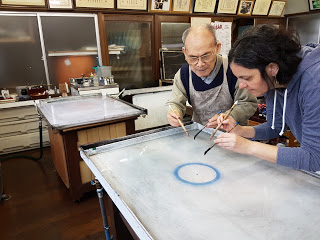
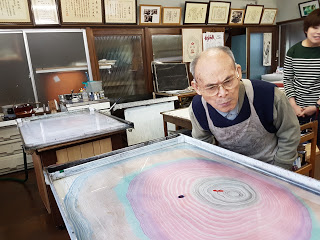
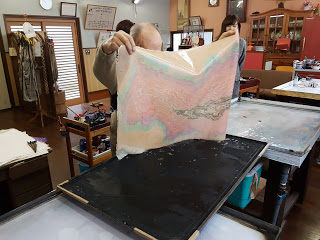
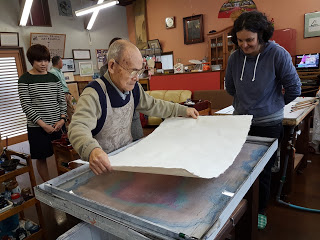
If you have any other questions , contact me anytime! I would be very happy to help you.
Enjoy suminagashi!
